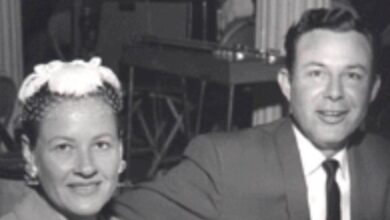This Iconic Dance From The 1950s, Do You Remember It Now
In February 1958, a lively dance craze took over high school gyms and sock hops across the United States, perfectly capturing the era’s vibrant spirit and reflecting the carefree energy synonymous with the early days of rock ‘n’ roll. This dance was known as “The Stroll,” a line dance that rapidly became emblematic of youthful exuberance and spontaneity. While it initially emerged from African American communities, its popularity surged nationally, particularly through television exposure on Dick Clark’s “American Bandstand,” where teenagers everywhere eagerly embraced the dance at local social events.
“The Stroll” evolved beyond just a dance; it became a cultural phenomenon that mirrored the social dynamics of the 1950s. The dance featured two lines of participants facing each other, creating a central aisle. Couples would take turns gliding down this aisle in sync with the music, infusing their own unique styles into their movements. This format facilitated both group engagement and individual expression, resonating with young people who were beginning to assert their identities amid a rapidly changing society.
Accompanying the dance was the song “The Stroll,” performed by the Canadian vocal band The Diamonds. Renowned for their smooth harmonies and catchy doo-wop melodies, The Diamonds played a vital role in popularizing “The Stroll” among a wider audience. Their rendition transcended mere hit status; it became an anthem encapsulating the joy and rebellious spirit of the time. Lead singer Dave Somerville, with his rich baritone, became the voice of the dance craze, guiding dancers with his melodious vocals.
The swift ascent of “The Stroll” established it as a staple at social gatherings, appealing to a diverse audience and bridging racial and social divides during a period marked by significant segregation in the United States. Its simplicity made it easily accessible to many, while its inherent cool factor made it irresistible. Teenagers donned their best outfits and flocked to dance floors, eager to join in the latest trend and exude a confidence that reflected the optimism of post-war America.
As “The Stroll” gained traction, it became a symbol of a generation’s desire for self-expression and enjoyment of the newfound freedoms of the 1950s. Its presence in television and music cemented its status in American pop culture, making it an unforgettable aspect of the era’s social landscape. The legacy of “The Stroll” endures as a representation of a time when music and dance united people and defined an entire generation.
?si=CbHsPwTM-VodZAIG





